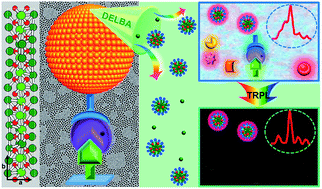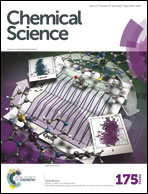Sub-5 nm lanthanide-doped lutetium oxyfluoride nanoprobes for ultrasensitive detection of prostate specific antigen†
Abstract
It remains challenging to develop ultrasmall (<5 nm) but highly luminescent bioprobes with a large linear detection range for the early diagnosis and monitoring of prostate cancer (PCa). Benefiting from the high molar density of lanthanide ions in an oxyfluoride matrix and the superior dissolution capability of Lu6O5F8 nanoparticles in the enhancer solution, we demonstrated the successful use of novel sub-5 nm Lu6O5F8:Eu3+ nanoprobes for the detection of prostate specific antigen (PSA) in clinical serum samples. The limit of detection for PSA is as low as 0.52 pg mL−1, which is almost a 200-fold improvement relative to that of a commercial dissociation-enhanced lanthanide fluoroimmunoassay (DELFIA) kit. The PSA levels detected in 23 patient serum samples were consistent with those measured independently by the DELFIA kit, showing the assay's reliability with a correlation coefficient of 97%. A linear range of 4 orders of magnitude ranging from 8.5 × 10−4 to 5.6 ng mL−1 for the assay of PSA was achieved, which is highly promising for the early diagnosis of PCa and monitoring of PCa relapse of patients after radical prostatectomy.



 Please wait while we load your content...
Please wait while we load your content...